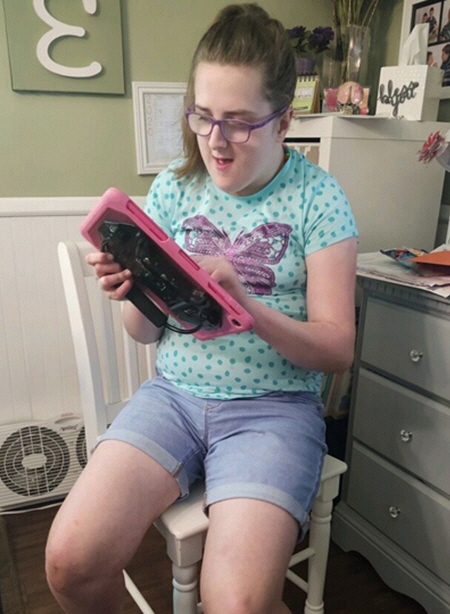Early assessment and intervention are essential.
By the time a child is 3 years old, those around them (parents, siblings, etc.) should be able to understand what they say 80% of the time. If not understood by this time, it would be necessary for the child to receive assistance from a Speech-Language pathologist.
People who do not see the child often may not understand the child as well as parents and siblings.
If by 4 years of age the child continues to have difficulty with clear speech most of the time, no matter where they are, it is time for parents to seek assistance.
Start with a Proper Diagnosis.
A Speech-Language Pathologist helps determine if the child’s speech clarity issue is due to phonological processing issues, an oral motor planning issue, or “developmental sounds,” those that take longer to pronounce appropriately, such as /r/ and /s/.
Children with developmental sound errors have regular substitutions, and people can adjust to understand what they are saying. Those children usually do not receive speech therapy until they are beyond the age that one expects mastery of all sounds. These kids typically grow into those sounds by the time they are 6 years of age.
Phonological processing issues use patterns to make words easier for children to say. One such example is assimilation, where one consonant influences another sound. For example, the word ‘dog’ becomes ‘gog.’ These kids usually need therapy to break the inappropriate patterns and learn appropriate ones.
Children with oral motor planning issues typically do not grow out of or improve without assistance. They have multiple sound errors without patterning and may sound the same word in different ways. This is also called Childhood Apraxia of Speech (CAS). These children need speech/language therapy as soon as possible.
Forming sounds and syllables follows a hierarchy.
There is a hierarchy of simple and complex sound development that goes along with syllable types.
Sounds develop from the following simple sounds: vowels to consonants made in the front of the mouth (m, p, b), sounds made in the back of the mouth (k, g); to those that glide (w, y); sounds that add airflow (f, sh, s, etc.); and, sounds that stop airflow (ch, soft g).
Syllables develop from the easiest (consonant vowels) to the hardest ones (multi-syllable words) to say. One needs to think about sentences as long multi-syllable words. The child may be able to say the word “can” until put into a sentence, and then, the word may vary in how it is said, depending on other words in the sentence. This transition is under the influence of oral motor planning for more complex syllables and potentially complex sounds. Difficulty with this step is consistent with Childhood Apraxia of Speech (CAS).
 Being understood requires oral motor planning.
Being understood requires oral motor planning.
Children with oral motor planning issues/childhood apraxia of speech are often not understood by their family members (an exception would be siblings who are the best interpreters!)
These kids often show frustration, anger, and low self-esteem due to not being understood. Parents become worried and frustrated, especially if the therapy approach is not appropriate to oral motor planning issues.
The other concerning thing for kids with oral motor planning/childhood apraxia of speech is the expressive language impairment that coexists with severe speech impairment. Grammar (parts of speech) skills, such as plurals, past tense endings, and possessive’s, aren’t produced due to the severe speech impairment. Speech therapy sometimes corrects this problem, but the grammar skills often need to be specifically addressed. These kids often do well with language comprehension but understanding the meaning behind grammar takes time.
Children with oral motor planning issues/childhood apraxia of speech are also at risk for reading and writing difficulties. These children usually have problems with phonemic awareness of sounds, such as letter-sound association, rhyming, etc. When they begin to write, they may have difficulty with the parts of speech they aren’t able to use or even sounds within words as their productions vary in their everyday speech.
Therapy is a two-fold plan.
For those with severe speech issues, the plan involves remediation of oral motor skills/oral motor speech and Augmentative & Alternative Communication.
Oral motor skills facilitate increased awareness of the face/mouth parts used to talk and assist in the appropriate muscle shape. Skills, such as bubble blowing, straw drinking, etc., can significantly help these.
The oral motor speech remediation approach helps build consistent speech skills from the bottom up (easiest to hardest). For example, if the child has learned to produce all vowels correctly, do they remain correct in various syllable types? If they can do that for simple syllable types, what happens when you add complex sounds and syllable types?
Augmentation provides a back-up.
Meanwhile, what is happening to their self-esteem from not communicating what they want to say? Meeting this problem is where the ‘Augmentative’ part of AAC comes into play – think ‘back up.’
Many people believe that using an AAC device deters children from talking. This belief is not the case! Research shows that children who use AAC talk MORE when they use AAC to augment what they say. The thought is that using the device as “their voice” assists in the correct imitation versus imitating someone else.
At this point, the child’s team (parents, school, Speech-Language Pathologist, and often the child) begins the SETT process to determine the most appropriate type of communication device and software program. (Please see the AAC Funding Process Assistance section under SERVICES). Many times, we decide to use an iPad with a robust vocabulary app if it has a durable case with a speaker that provides appropriate volume for noisy environments.
 Alternative communication enhances understanding.
Alternative communication enhances understanding.
The child learns to recognize when they are not understood, i.e., recognizing their listeners’ facial expressions, being asked multiple times to repeat what was said, or interpreted as something they did not say.
Next, they learn how to use the device to create full sentences to express themselves or find the misunderstood ‘keyword’ on the app. Teaching methods for this are the same as outlined under Augmentative & Alternative Communication under SPECIALTIES.
Learning the sentence creation approach lends itself to correct grammar usage and a model that speaks the word’s correct pronunciation. Encouraging (not forcing) the child to talk with the device offers benefits over time.
Using the ‘key word’ approach requires a good knowledge of categorization for the nouns that are not understood, as this is how the child finds nouns in all communication apps.
This 2-fold plan meets many of the needs of the child with oral motor planning issues, including:
* Being able to say what they want to say and be understood using AAC,
which reduces frustration and improves self-esteem.
Being understood is essential. Let us work with your child.

